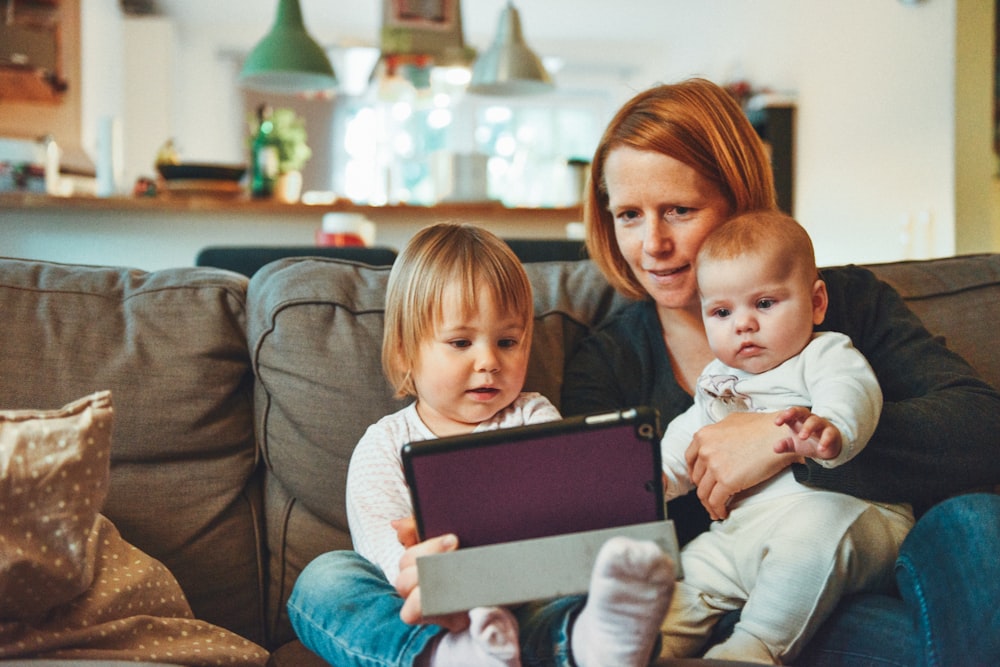Hello Everyone,
I trust now that we are in the final week of September that you are all settled into your routines and rhythms whether it be at school, work, or just life in general. As a classroom teacher, a large part of settling into new routines is deciding on a means to communicate home. During my Early Childhood Education diploma at UBC, I took a course with Dr. Mari Pighni which was was entirely dedicated to fostering and maintaining a healthy home-school relationship.

(Source: https://unsplash.com/photos/OVDtgUhUPBY)
Last school year I used a combination of communication tools including informal conversations at the door during drop-off and pick-up, formal meeting times, and conferencing. I also utilized traditional methods of communication such as planner messages, school-wide paper notices, and posters in the classroom window. To service my families who did not have the opportunities to come to the classroom as frequently I used email as a primary means of communication. To access all families my parent representatives set up a Shutterfly sharesite in my name to provide an up-to-date calendar, volunteer sign-up opportunities, a class contact list, and important reminders. I found that, in terms of open communication, I had the most success with families who were available for face-to-face conversations and through the use of the sharesite. It was an excellent way to streamline information and have a safe space for parents to ask questions all in one location.
 This year, my options for home-school communication have changed due to my relocation to a new school community. To maintain a sense of order and consistency for families I adopted the communication tool of my Kindergarten colleagues. Kindergarten students do not typically own a planner due to their limited writing abilities so instead the kindergarten teachers at my school use what they call a “back and forth folder.” The folder contains important information regarding the IB PYP and the Zones of Regulation as well as a communication page for families and the classroom teacher to write notes to each other. The front pocket is for documents, artwork, notices, etc. that are meant to be “left” at home and the back pocket is meant for those items that are meant to come “right” back to school. The kindergarten teachers also have blogs which provide information about the current IB Unit of Inquiry and scheduling for sharing. I tried these options for a few weeks but quickly realized that they weren’t true to my preferred methods of communication. I very much believe that communication is a two-way street and that there should always be an opportunity for the receiver of a message to respond. With this belief in mind, I created a Shutterfly sharesite for my class this year to supplement the back and forth folder. Additionally, I added a Friday email to the communication thread, outlining all the events of the past week with some photos to engage families.
This year, my options for home-school communication have changed due to my relocation to a new school community. To maintain a sense of order and consistency for families I adopted the communication tool of my Kindergarten colleagues. Kindergarten students do not typically own a planner due to their limited writing abilities so instead the kindergarten teachers at my school use what they call a “back and forth folder.” The folder contains important information regarding the IB PYP and the Zones of Regulation as well as a communication page for families and the classroom teacher to write notes to each other. The front pocket is for documents, artwork, notices, etc. that are meant to be “left” at home and the back pocket is meant for those items that are meant to come “right” back to school. The kindergarten teachers also have blogs which provide information about the current IB Unit of Inquiry and scheduling for sharing. I tried these options for a few weeks but quickly realized that they weren’t true to my preferred methods of communication. I very much believe that communication is a two-way street and that there should always be an opportunity for the receiver of a message to respond. With this belief in mind, I created a Shutterfly sharesite for my class this year to supplement the back and forth folder. Additionally, I added a Friday email to the communication thread, outlining all the events of the past week with some photos to engage families.
The only problem is that now that my email has been sent, I have only received two emails back which makes me wonder if parents haven’t read it. And, if they haven’t read the Friday email, does that mean that they are not checking the class Shutterfly sharesite? These questions come to mind due to the shocking statistic I learned during reporting season last year that less than 50% of families at my previous school signed in online to check their children’s report card. This issue is particularly important to my school this year because the staff is looking at ways to engage parents in the students’ units of inquiry by asking them to report any signs of learning pertaining to the units demonstrated at home. In the past, forms were sent home inviting parent feedback during the unit of inquiry but through a survey, the parents and teachers reported feeling that the forms were ineffective. This year, the staff has considered going digital with the forms but will it become just ANOTHER thing for parents to sign into online?

(Source: https://unsplash.com/photos/UH-xs-FizTk)
The goal is to increase family engagement and open up the communication between home and school. Based on my conversations with the primary team at my school, there seems to be an argument that some families may be more inclined to communicate via email, websites, online forms, etc. because they are more accessible; however, other families may become withdrawn and less communicative by the impersonal, non-accountable characteristics of virtual communication. The issue of available technology in the home is also concerning because we cannot reasonably expect that all families in our school communities will have access to technological devices.
What are your thoughts on bridging the gap between home and school via technology? Is there a mode of communication that your school uses which you have found to be successful? Please leave a comment below!
Take care,
Miss P. 💕
